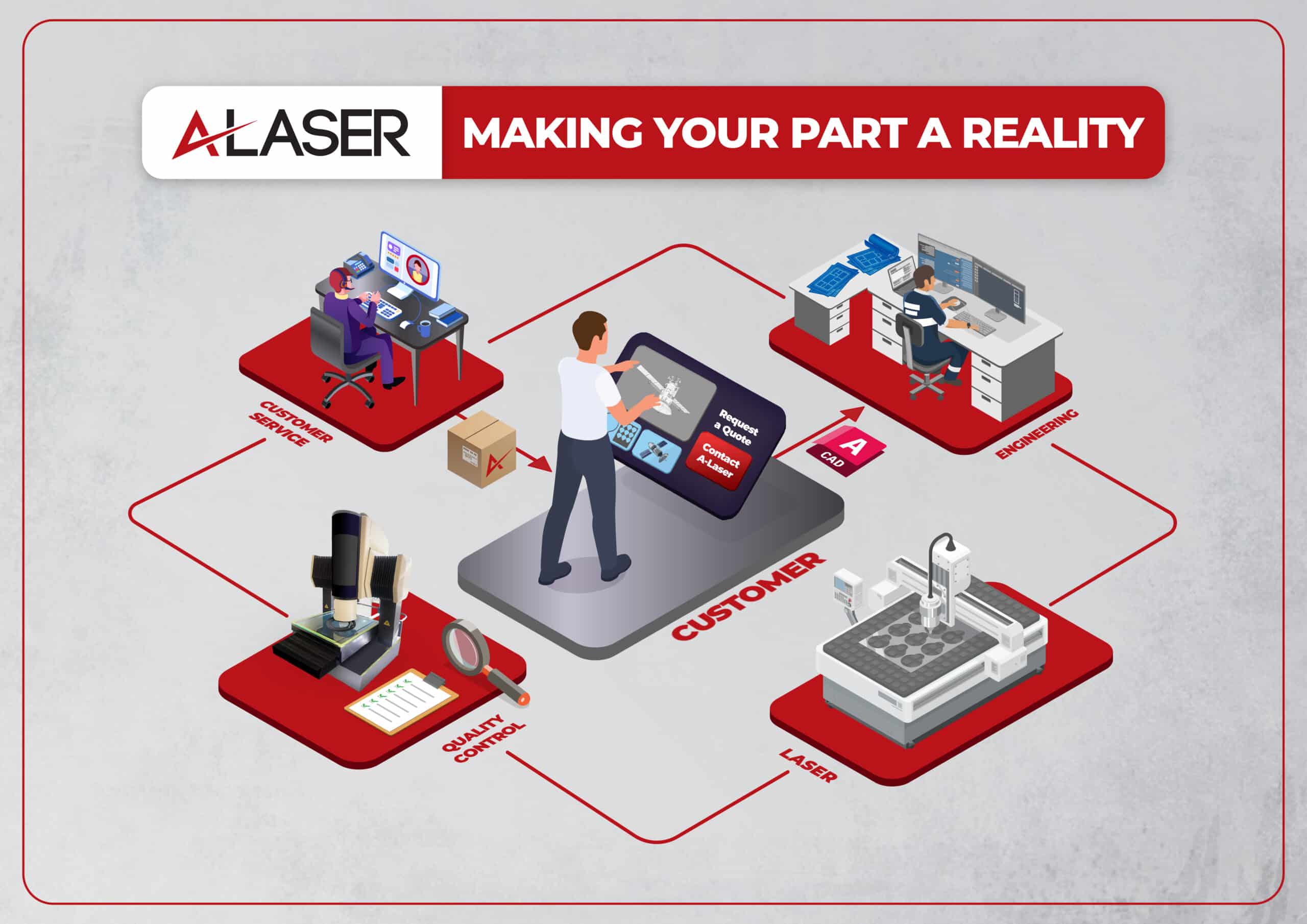Sheet Metal Laser Cutting
When precision meets efficiency, sheet metal laser cutting emerges as the superior method for transforming flat metal sheets into intricate, functional components. Whether for prototyping or mass production, laser cutting offers unmatched accuracy, minimal waste, and versatile application across industries like aerospace, automotive, and electronics.
What is Sheet Metal Laser Cutting?
Sheet metal laser cutting is a technology-driven process that uses focused laser beams to cut through metal sheets with precision. By vaporizing, melting, or ablating the material along a defined path, it creates clean, burr-free edges without requiring secondary finishing processes.
For thicker sheet metal, fiber lasers and infrared (IR) lasers are commonly employed due to their high power density and efficient energy absorption by metals like steel, aluminum, and brass. These lasers can handle greater material thicknesses with exceptional speed and precision, maintaining clean edges and reducing the risk of warping or heat distortion. This capability makes them ideal for applications in industries like automotive and aerospace, where robust and precise components are essential.
Key Advantages of Sheet Metal Laser Cutting
| Feature | Benefit |
|---|---|
| High Precision | Achieves tolerances within microns for intricate designs. |
| Material Versatility | Works with steel, aluminum, copper, brass, and other alloys. |
| Efficiency | Fast setup and cutting speeds reduce lead times. |
| Cost-Effectiveness | Reduces material waste with precise cutting paths. |
| Scalability | Suitable for one-off prototypes and large-scale production. |
Applications of Sheet Metal Laser Cutting
-
Prototyping and Custom Parts
- Make your part a reality with exact specifications.
-
Automotive Components
- Lightweight, high-strength parts for fuel efficiency.
-
Electronics Enclosures
- Custom-fit cases and panels with ventilation or cable slots.
-
Decorative Metalwork
- Intricate patterns for architectural and interior design projects.

Comparison of Cutting Methods
| Cutting Technology | Precision | Speed | Material Compatibility | Typical Applications |
|---|---|---|---|---|
| Laser Cutting | High (± 0.1 mm) | Fast | Most metals, including reflective ones | Complex designs, intricate parts |
| Plasma Cutting | Moderate (± 1 mm) | Faster on thicker sheets | Conductive metals only | Structural parts, thick materials |
| Waterjet Cutting | High (± 0.2 mm) | Slower | Any material | Heat-sensitive applications |
Best Practices for Designing Sheet Metal Laser-Cut Parts
- Minimize Intricate Cuts: While laser cutting excels at precision, overly complex designs can increase production time.
- Consider Material Thickness: Match the laser’s power settings to the thickness of the sheet for optimal results.
- Account for Kerf Width: Factor in the width of the cut (kerf) to maintain tight tolerances in assemblies.
Frequently Asked Questions
What thicknesses of sheet metal can you cut?
We can handle sheet metal as thin as 0.08 mm and as thick as 4 mm, depending on the metal type.
Can reflective metals like copper be laser cut?
Yes, advanced fiber lasers allow for efficient cutting of reflective materials without damaging the equipment.
How does laser cutting compare to traditional methods like stamping?
Laser cutting is more flexible and precise, making it ideal for custom and small-batch projects, and also does not require mechanical force.
